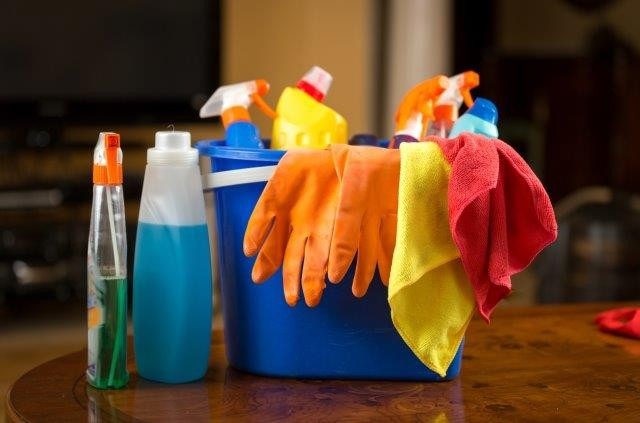Oct 4 2019
For generations, chlorine bleach has been used by people to clean and sanitize their homes. However, scientists have recently found that bleach fumes, coupled with light and a citrus compound contained in numerous household products, can form airborne particles that could be detrimental when breathed in by pets or people.
 Bleach can give off fumes that, when combined with light and a citrus compound found in many household cleaners and other products, can create indoor air pollutants. (Image credit: Kryzhov/Shutterstock.com)
Bleach can give off fumes that, when combined with light and a citrus compound found in many household cleaners and other products, can create indoor air pollutants. (Image credit: Kryzhov/Shutterstock.com)
The study outcomes have been reported in ACS’ Environmental Science & Technology.
Bleach cleaning products release chlorine-containing compounds like chlorine gas (Cl2) and hypochlorous acid (HOCl) that can get aggregated to fairly high levels in poorly ventilated indoor settings. These gases can react with other chemicals typically found in homes, for example, limonene—a lemon- or orange-scented compound added to several cleaners, air fresheners, and personal care products.
Furthermore, sunshine via windows or indoor lighting could disintegrate HOCl and Cl2 into a hydroxyl radical and a chlorine atom. These can then react with other compounds to produce air particles known as secondary organic aerosols (SOAs). These pollutants have been associated with respiratory problems and other adverse health issues.
Chen Wang and colleagues intended to check whether limonene and bleach fumes, at probably possible concentrations in indoor settings, could react to create SOAs under dark and light conditions.
The scientists added HOCl, Cl2, and limonene to air in an environmental chamber and subsequently measured the reaction products using mass spectrometry. Under dark conditions, HOCl/Cl2 and limonene rapidly reacted to form different volatile compounds.
When the team switched on fluorescent lights or exposed the chamber to sunlight, the volatile compounds reacted with the light-produced hydroxyl radicals and chlorine atoms to develop SOAs.
Although the composition and probable health impacts of these particles have to be explored in detail, they could be occupational risks for people involved in cleaning tasks, the scientists say.
The researchers received funding from the Chemistry of Indoor Environments program of the Alfred P. Sloan Foundation.